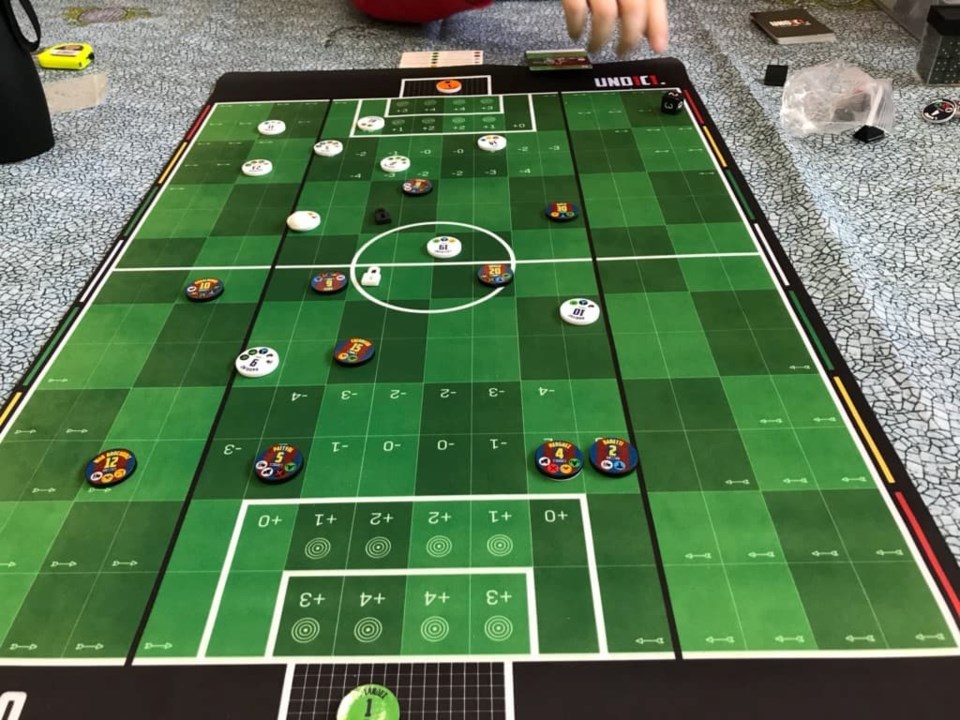YORKTON - To begin with, it should be noted that those of us in our informal little Meeple Guild who do follow sports, a range of fanatic to barely aware they exist, are still not soccer fans. As one of the group noted, the venn diagram of sports fan and gamer is a small overlap.
Yet, we do love fantasy ‘soccer/football’ games such as Dreadball, Guild Ball and Blood Bowl.
So it was with some definite interest when UND1C1 arrived.
UND1C1 is a tabletop soccer simulator for two players, each acting as the coach of a soccer team.
Before opening the box there was a realization that if the game was too reliant on charts and the actual details of a sport we don’t follow it was likely to be shelved rather quickly.
That said however, opening the box was a good start to liking UND1C1.
The quality of the components is excellent.
It starts with a very well-marked neoprene play mat which rolls up neatly for storage. Neoprene ‘boards’ are just hard to beat. It should be noted there is however no score tracker on the board, which is unfortnate.
The ‘players’ or pieces if you will, are plastic discs which you do have to put stickers on, which with 16 per side, and each two-sided, and with multiple teams, was a tad tedious, but the end results are nice looking on the board.
Pieces have a player name, number, and small graphic which is an easy guide to initial game placement, and then a bunch of symbols – more on this in a bit.
Players get a handful of cards which influence game play when used, and again they are nice quality.
As is the rulebook.
Each coach controls a team of 11 players and has a deck of 20 strategy cards.
Strategy cards differ by color, duration and effects, and can be used to boost one team’s game or to inhibit the opponent's strategy.
The strategy cards are also the game timer. You must draw a card at the end of your turn. Draw the last card, play one more turn and the game ends. It’s a neat mechanic.
On a turn a player may play up to three actions, move, pass, shoot etc., and use up to three strategy cards.
Some actions are automatic, a player without the ball may move one or two boxes.
Others, like taking a shot, require a dice roll, where you must achieve a certain number based on various factors to be successful. So a pass depends on how far away the player receiving the pass is, and how may opponent pieces are next to the receiver.
The use of dice rolls are very familiar if you have played the aforementioned fantasy football games.
Then there are the symbols. A piece with a playmaker gets a bonus when passing, cannon a bonus when shooting for a goal, rabbit, can move extra spaces, tractor, can perform an extra movement, etc. Again, this is very familiar from fantasy games, where players usually have a card with various ‘special abilities.’ Using the iconography right on the pieces is super simple, and allows an opponent to see who is on the pitch too.
So much of what is here has been used in other ‘ball’ sim board games, with some neat refinements, like the skills on the player piece, but while not new, it sure works slick in this package.
It ends up UND1C1 is very much Blood Bowl without the violence, or Dreadball sans the dread, and that’s fine, it works.
You have dribbles and soccer tackles, and crosses and headers and it ends up working. This is a very accessible sport simulation well work a look. Check it out at www.und1c1.com)






